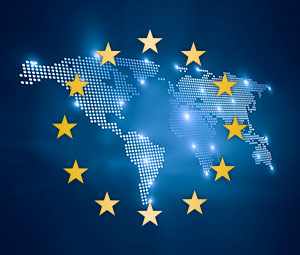 Ransomware is the top threat facing computer users as Interpol reveals massive 2017 cyber crime “epidemic” taking over PCs as well as internet-linked devices like routers and CCTV cameras to turn them into tools for criminals,” reported the European policing agency Europol. Experts cited attacks such as ‘WannaCry,’ data breaches, the darknet, and extortion of youth for child pornography.
Ransomware is the top threat facing computer users as Interpol reveals massive 2017 cyber crime “epidemic” taking over PCs as well as internet-linked devices like routers and CCTV cameras to turn them into tools for criminals,” reported the European policing agency Europol. Experts cited attacks such as ‘WannaCry,’ data breaches, the darknet, and extortion of youth for child pornography.
Ransomware eclipsed most other forms of cyber crime as online crime surged in 2017. Europol coordinated several successful cross-border operations against cyber criminals last year. But national authorities urgently need to devote more resources to targeting the developers of hacking tools, the agency’s head said, reported Reuters.
In recent years, there has been a surge of ransomware attacks. It’s been reported all over security blogs, tech websites and even on the news. It doesn’t seem to stop; in fact, it seems to be getting worse in both spread and sophistication.
In December 2016, Check Point and Europol released a joint report called ‘Ransomware: What You Need to Know.’ Check Point’s consumer product line is ZoneAlarm, a world leader in mobile privacy protection and consumer Internet Security.
Ransomware are malware designed to extort money from users whose computer they infect. Recent innovative methods for infecting, monetizing and targeting lucrative targets show that this attack vector is growing in sophistication since its primitive yet effective origins.
“The last year has been exceptional, given the size and the type and the range of the attacks that we’ve seen,” Europol director Rob Wainwright said, detailing an annual review of Internet crime threats.
“Growing sophistication in the cyber crime community”, where criminal groups band together to deliver “cyber crime services”, is becoming the major engine of growth in online crime undertaken for illegal profit, he said.
Wainwright said Europol is setting up a special unit to fight dark market operations, where credit card information is increasingly being sold in addition to drugs, impacting the retail, airline and hotel industries. “The global impact of huge cyber security events such as the WannaCry ransomware epidemic has taken the threat from cyber crime to another level,” Wainwright said.
“Banks and other major businesses are now targeted on a scale not seen before and, while Europol and its partners in policing and Industry have enjoyed success in disrupting major criminal syndicates operating online, the collective response is still not good enough. In particular people and companies everywhere must do more to better protect themselves.”
Despite the increase in threats, the report also notes “tremendous operational successes” in fighting cyber crime. This includes taking down two of the largest Darknet markets, AlphaBay and Hansa, dismantling the Avalanche network. According to the experts, the report highlights a need for improved methods of handling cyber attacks, as the threat continues to grow.
“This report shows online crime is the new frontier of law enforcement,” said Julian King, EU Commissioner for the security union. “We’ve all seen the impact of events like WannaCry: whether attacks are carried out for financial or political reasons, we need to improve our resilience and ensure cyber crime does not pay.”
The joint Check Point / Europol report from 2016 noted that CryptoLocker, the first famous ransomware, was observed in the wild in 2013. From then until the end of 2015 there were only a few active ransomware variants. Some of these variants were weak enough that it was possible to decrypt the encrypted files without any need to give in to the ransom demand. The infection methods were limited.
In the end of 2016, EU member states and third parties submit samples of malware to Europol for analysis in the Europol Malware Analysis System (EMAS2). In Quarter 4 there was a particular increase, with the number of submissions 158% higher than the previous quarter.